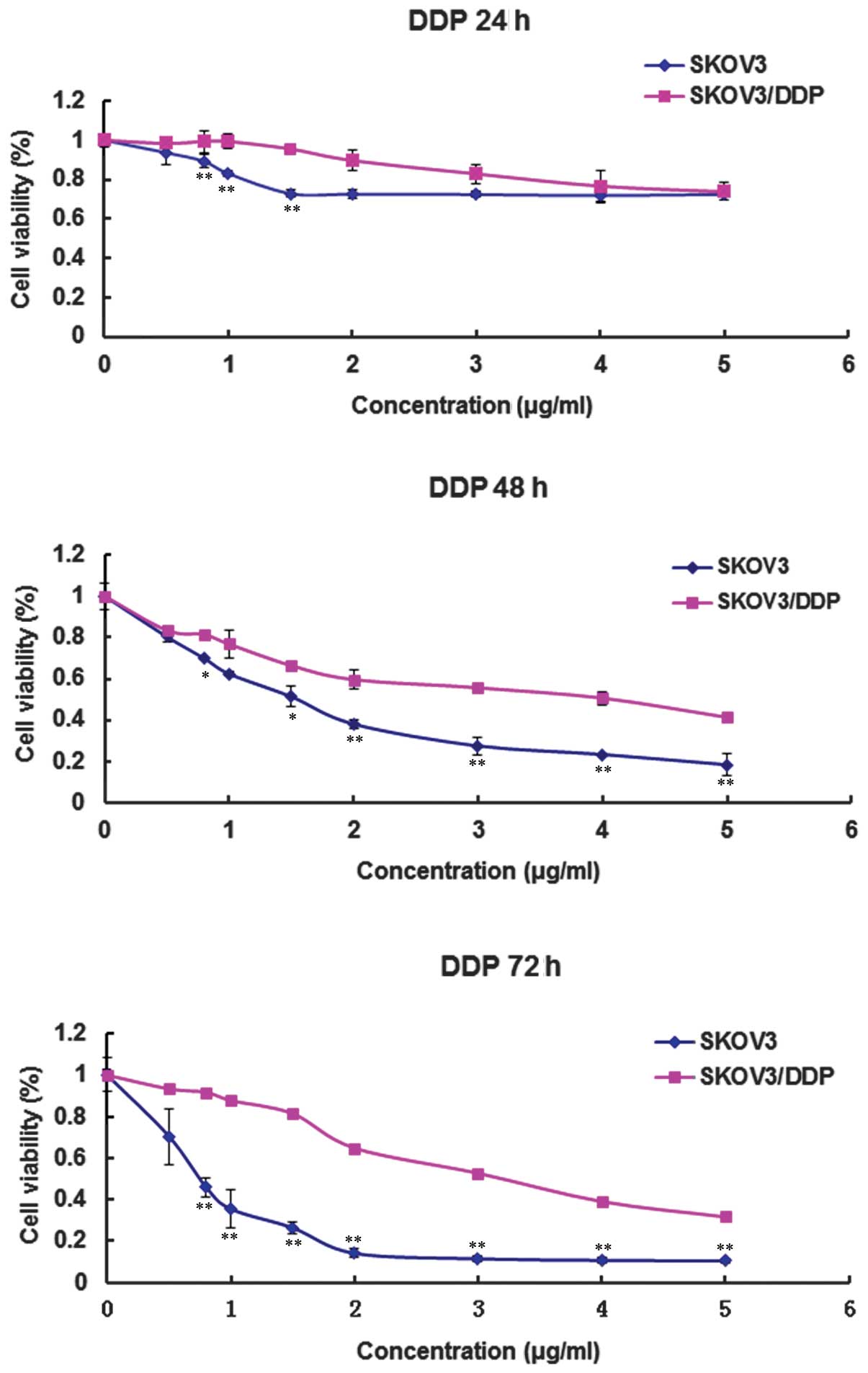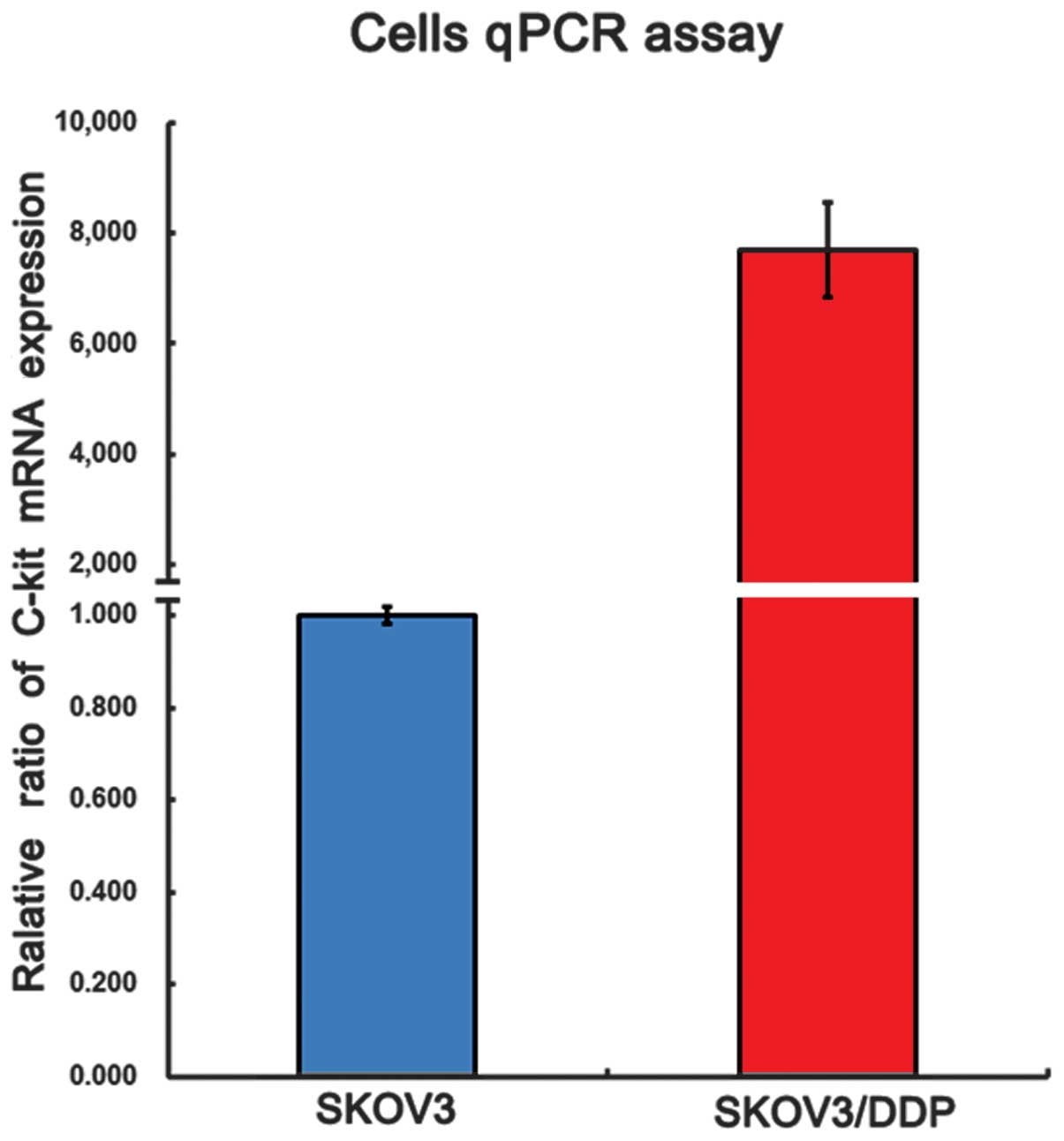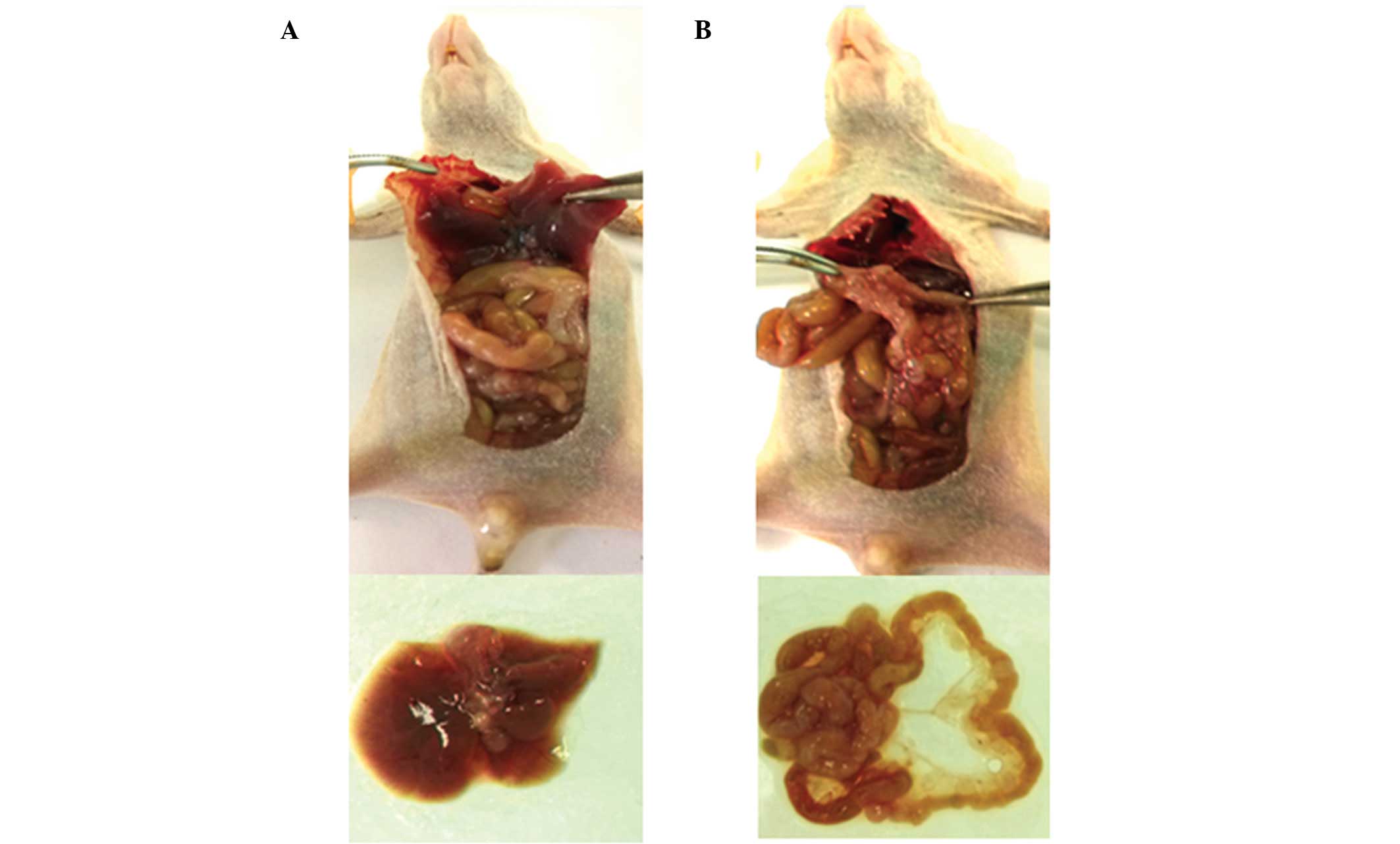Establishment of an orthotopic transplantation tumor model in nude mice using a drug‑resistant human ovarian cancer cell line with a high expression of c‑Kit
- Authors:
- Published online on: September 15, 2014 https://doi.org/10.3892/ol.2014.2537
- Pages: 2611-2615
Metrics: Total
Views: 0 (Spandidos Publications: | PMC Statistics: )
Total PDF Downloads: 0 (Spandidos Publications: | PMC Statistics: )
Abstract
The resistance of ovarian cancer to platinum‑based chemotherapy is a critical issue in the clinical setting. The present study aimed to establish animal models to replicate this clinical condition, as well as to investigate the resistance mechanisms of ovarian cancer. A cisplatin (DDP)‑resistant human ovarian cancer cell line, SKOV3/DDP, was screened, validated and injected subcutaneously into the neck of female nude mice. Following tumor establishment, the tumor was collected and cut into small sections, which were subsequently implanted into the ovaries of other nude mice. The growth of the orthotopic tumors was observed and the tumor‑bearing mice were sacrificed and dissected. The orthotopic and metastatic tumor tissues were collected, sectioned, stained with hematoxylin and eosin and analyzed. In the present study, 16 nude mice underwent orthotopic transplantation surgery and a tumor model was successfully established in 14/16 of the mice, with an in situ tumor formation rate of 87.5%. Following euthanasia, a laparotomy demonstrated the tumor formation at the site of transplantation, as well as varying degrees of metastasis to additional organs and tissues. Therefore, the present study successfully established an orthotopic tumor transplantation model in nude mice using a c‑Kit‑positive DDP‑resistant human ovarian cancer cell line. This model may represent a useful tool for investigating the resistance mechanism of ovarian cancer, as well as evaluating the efficacy of therapeutic strategies.















